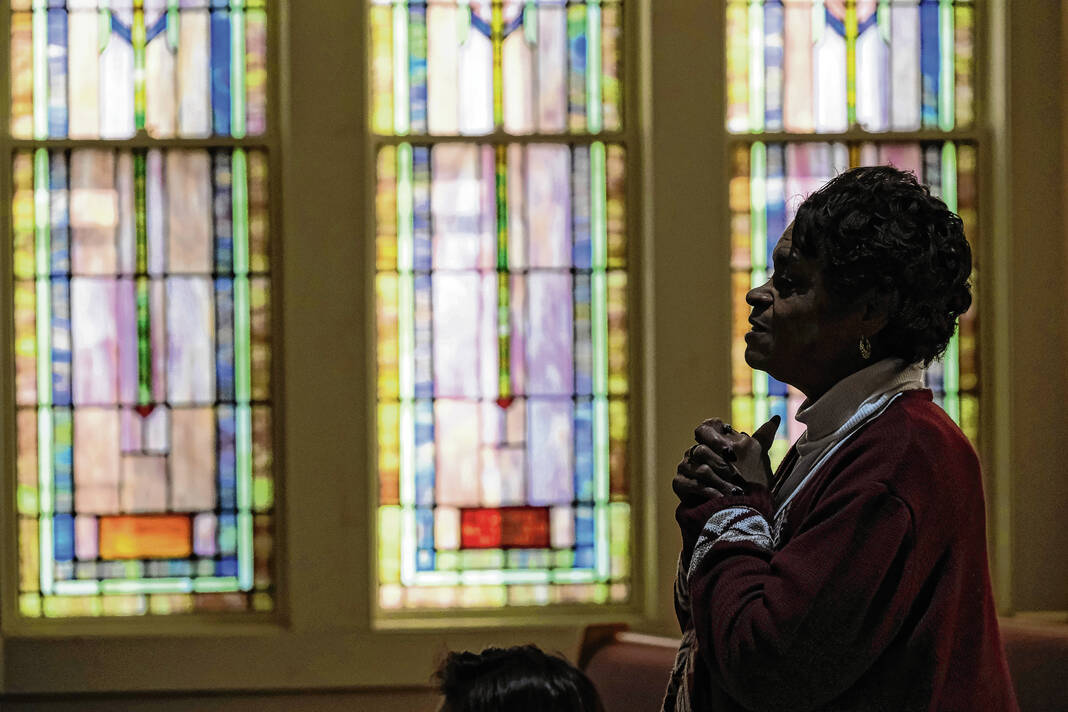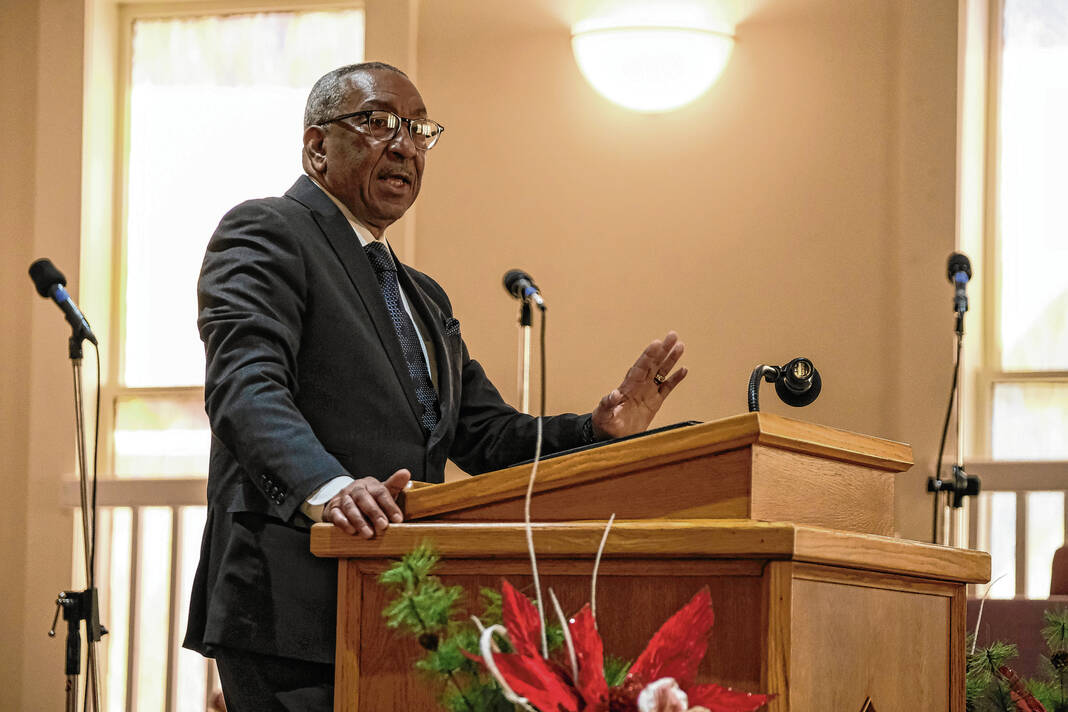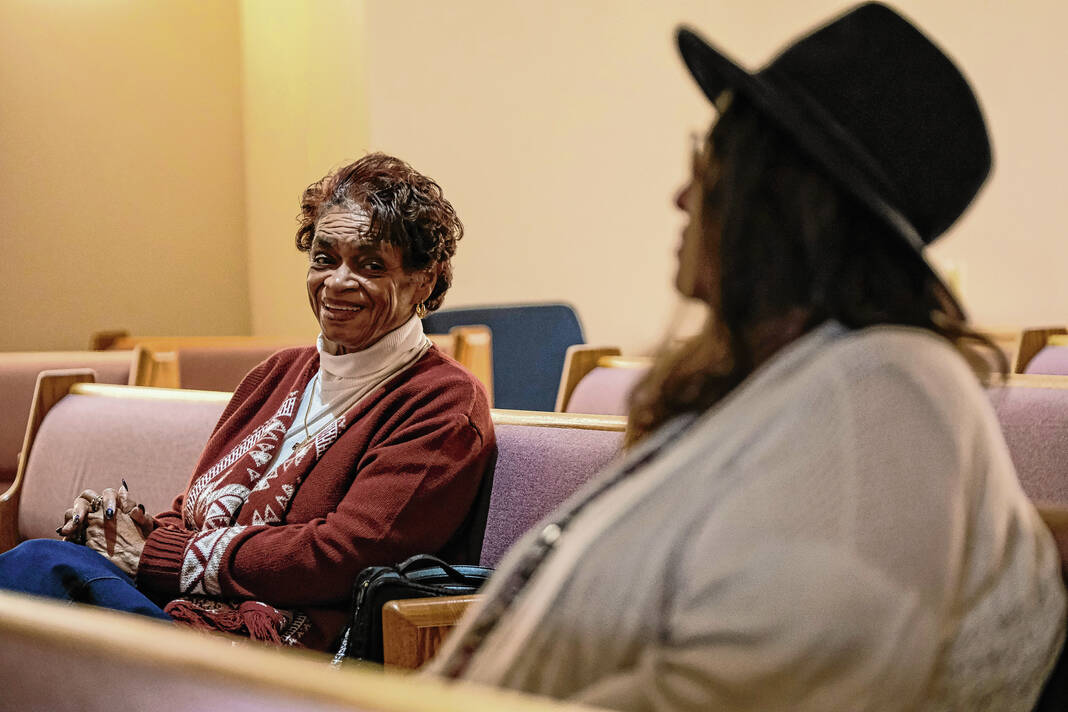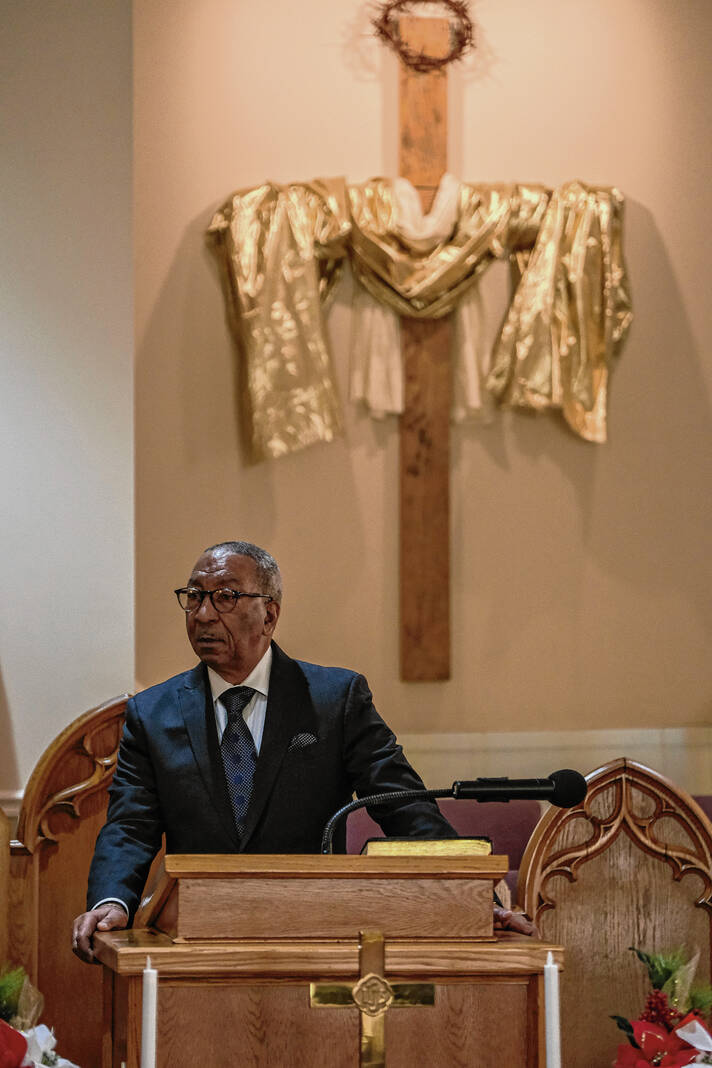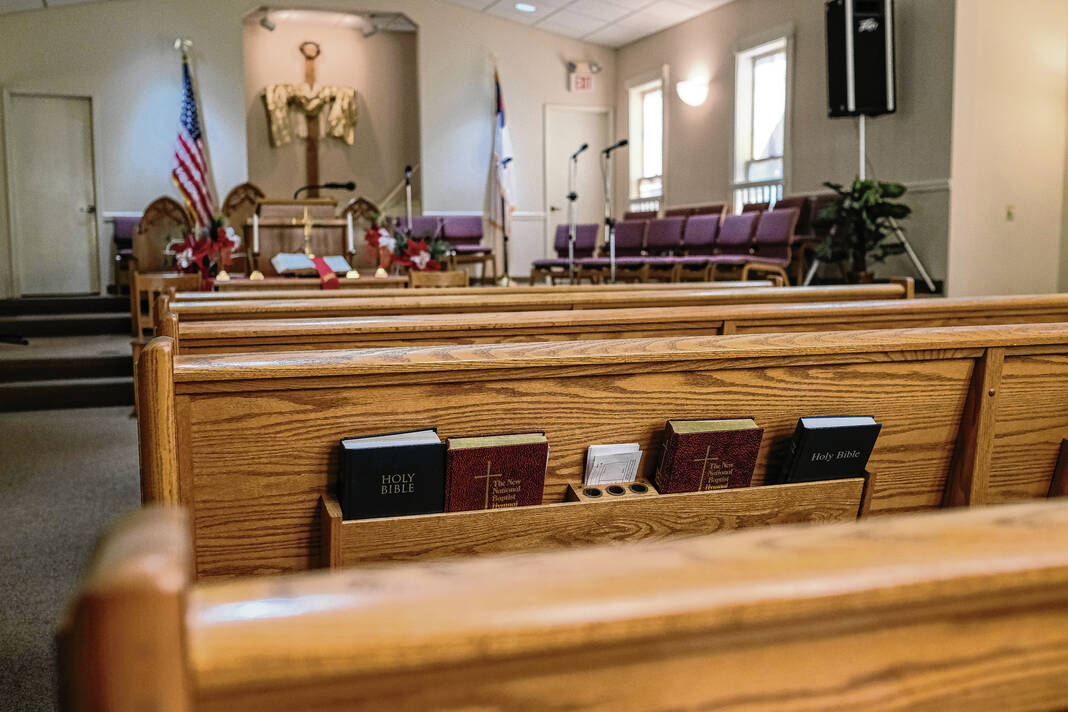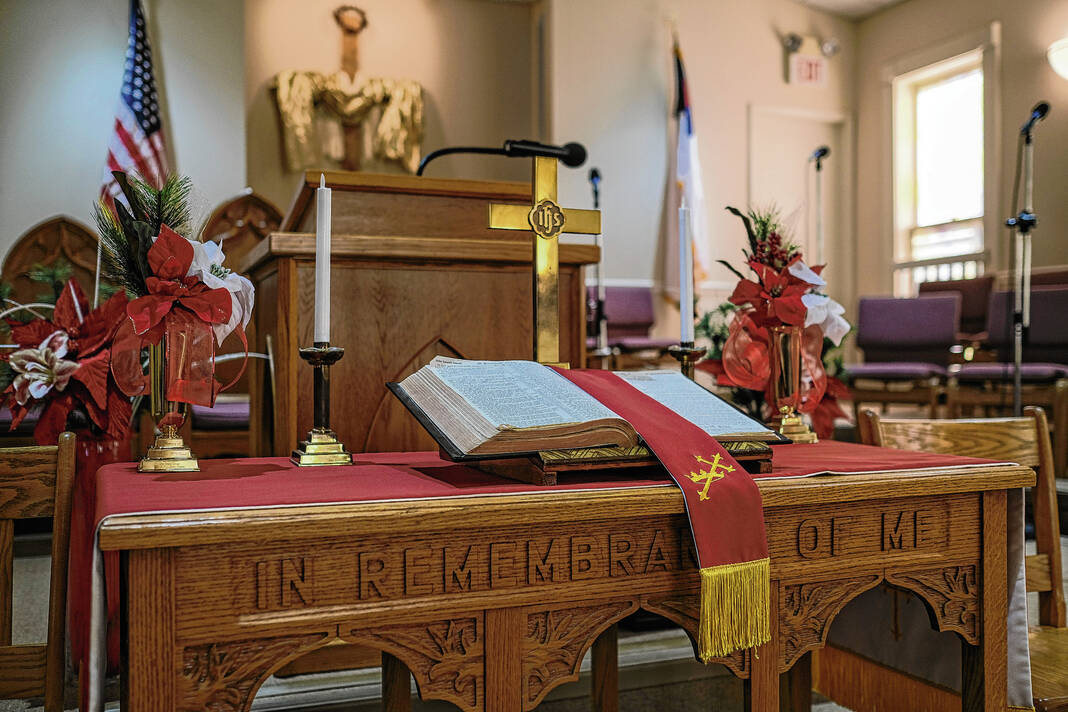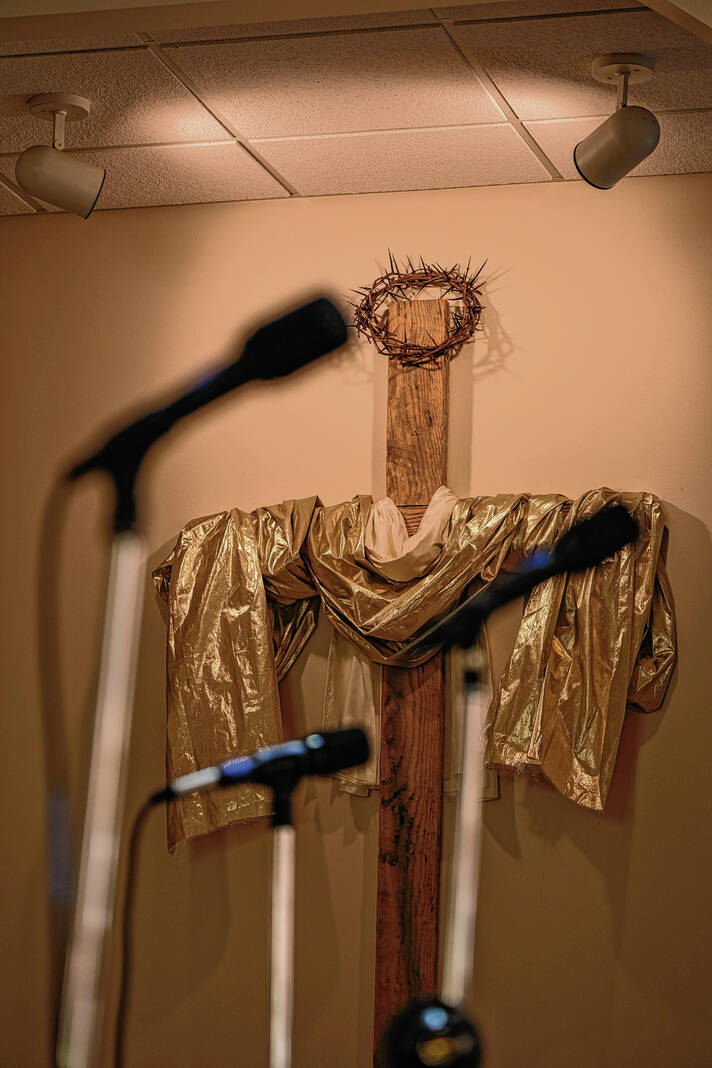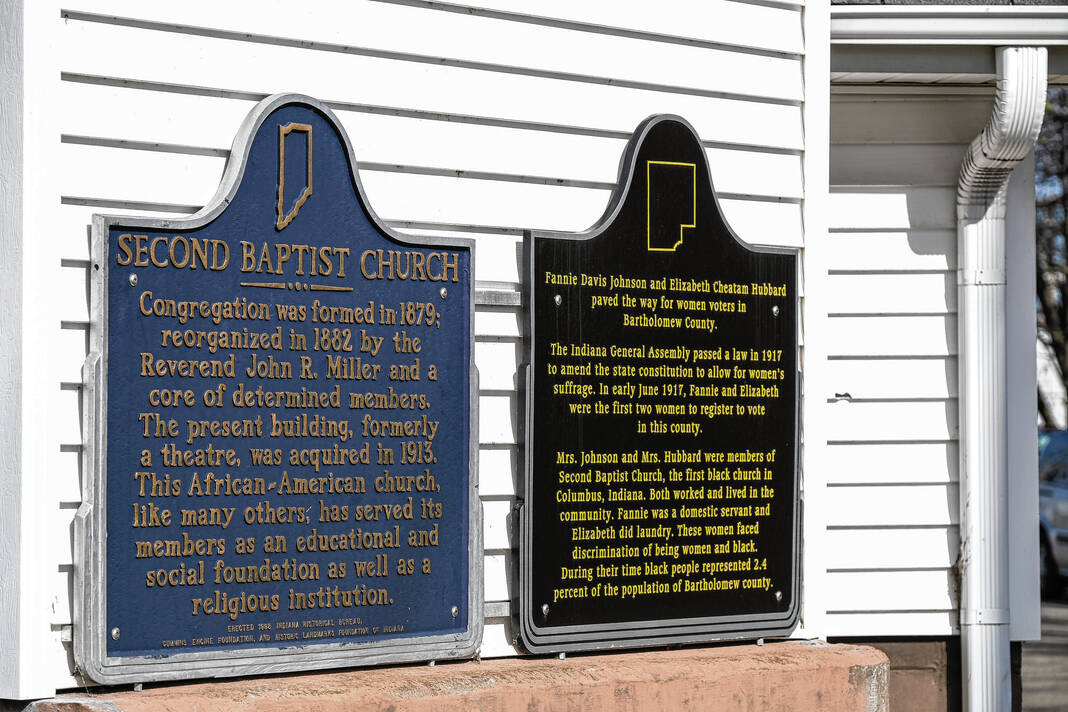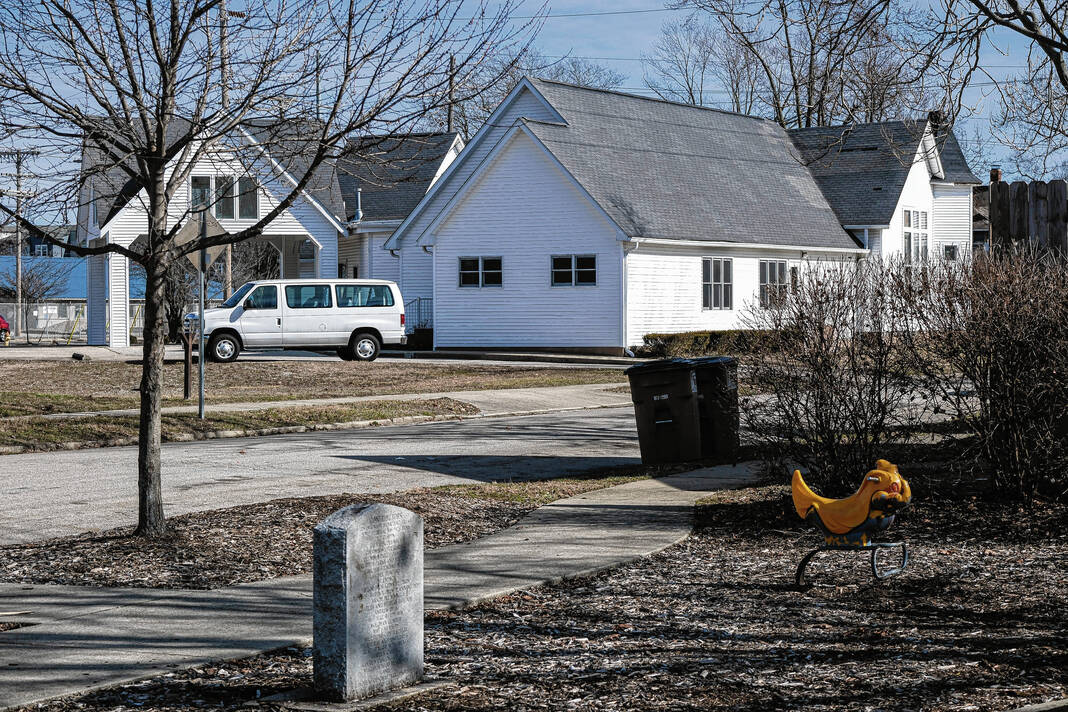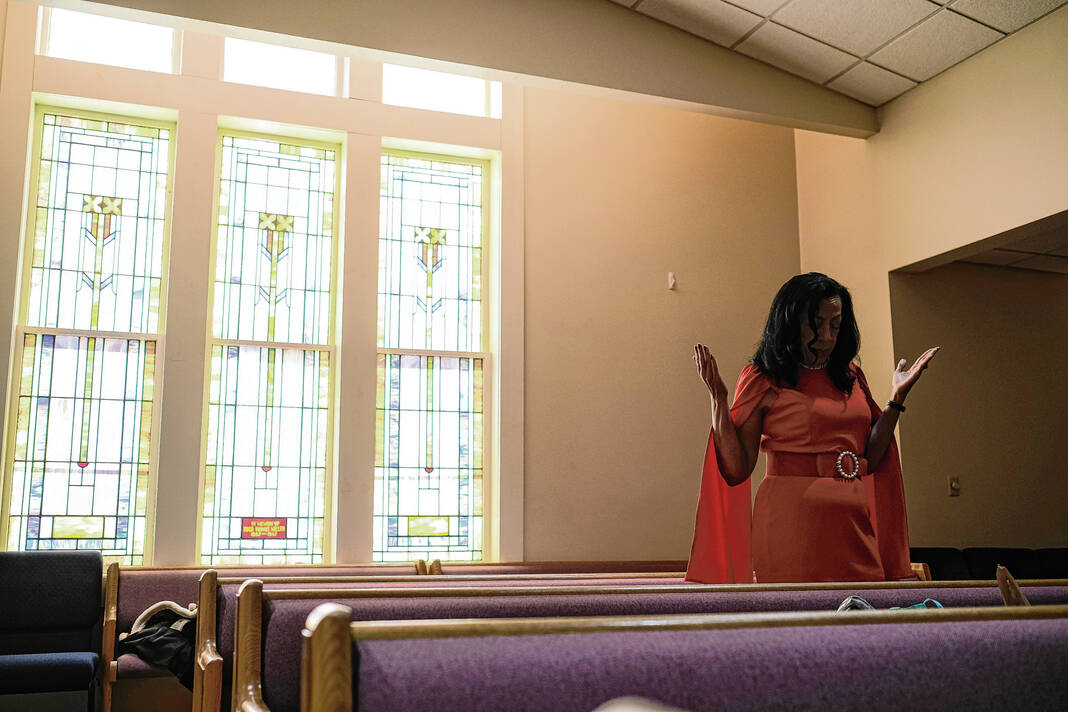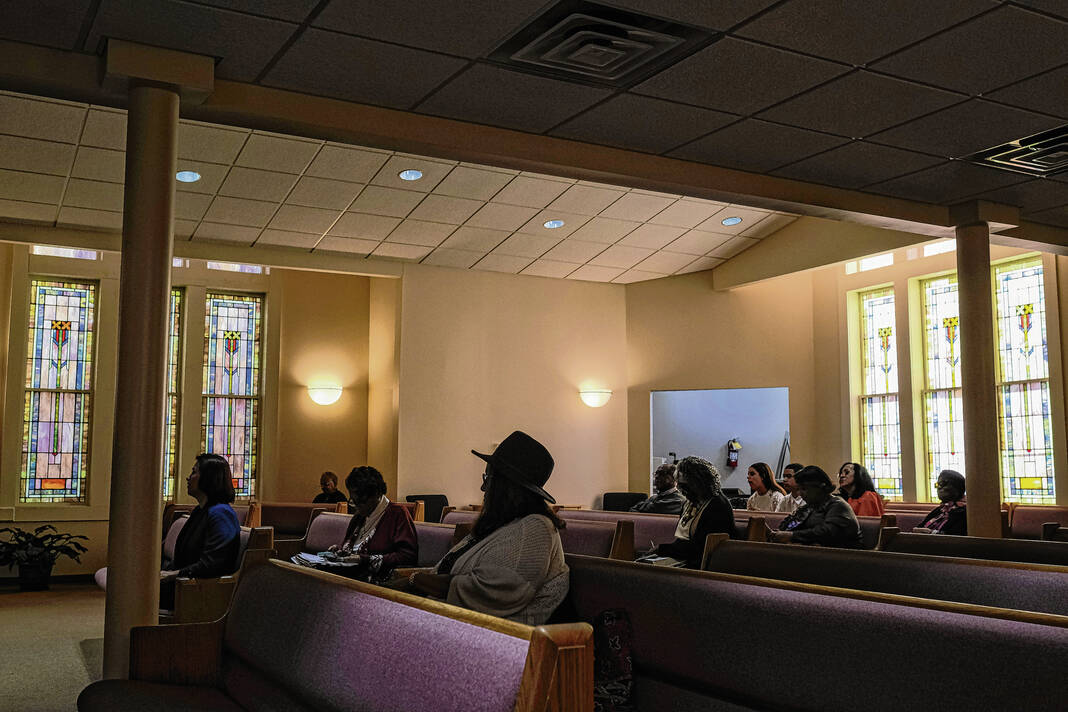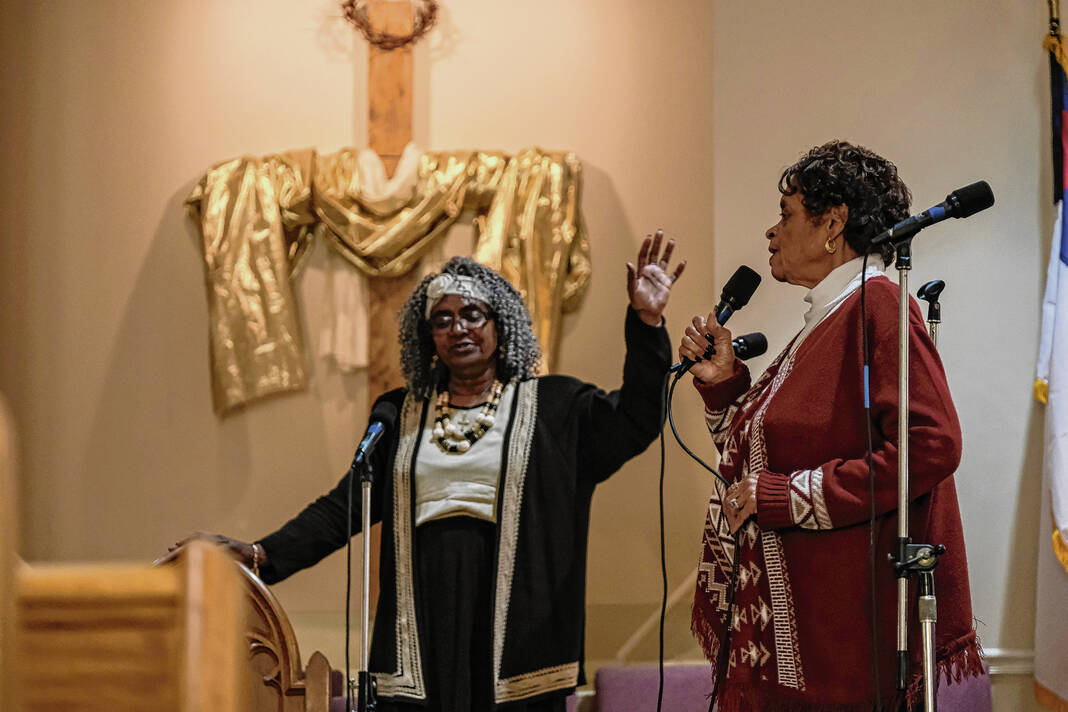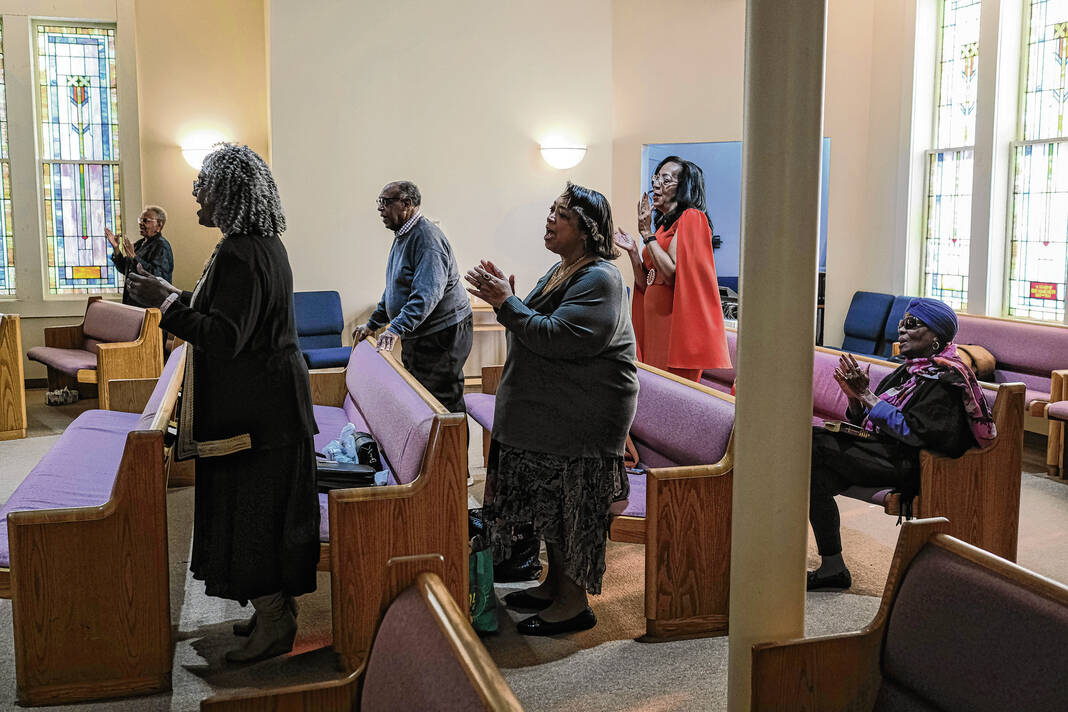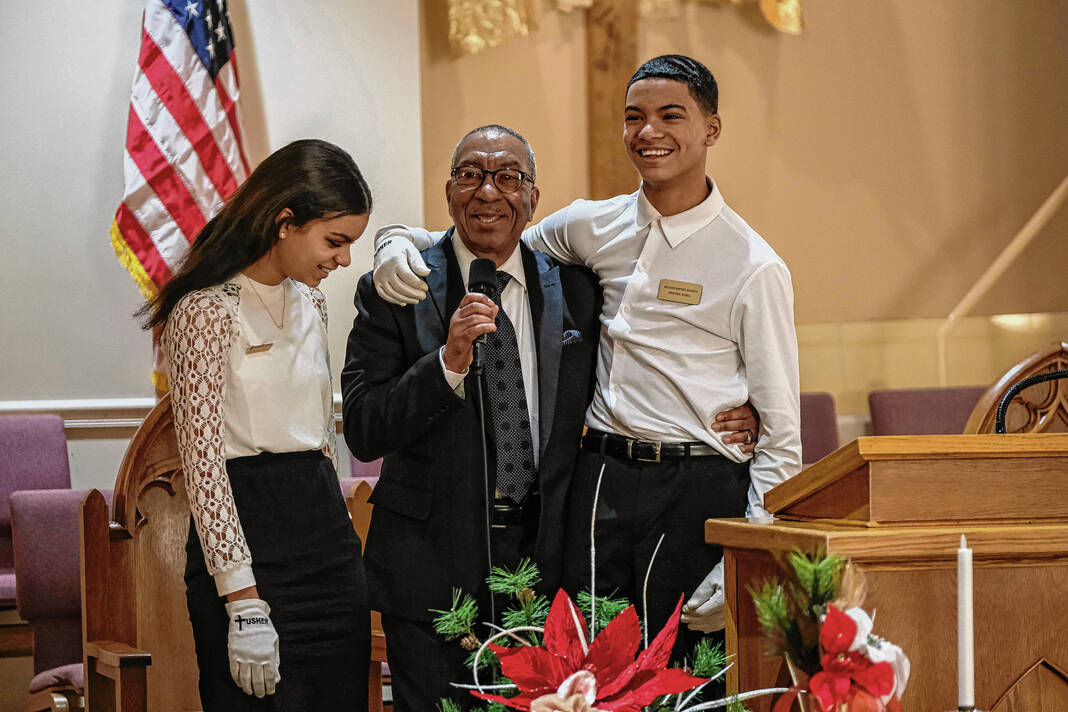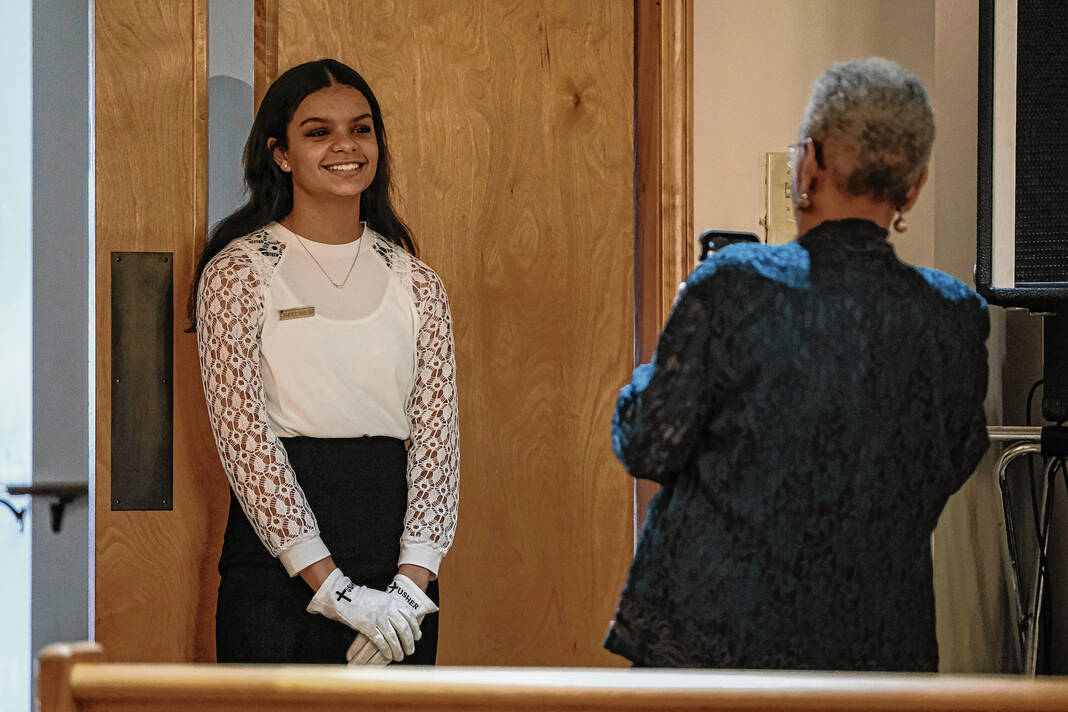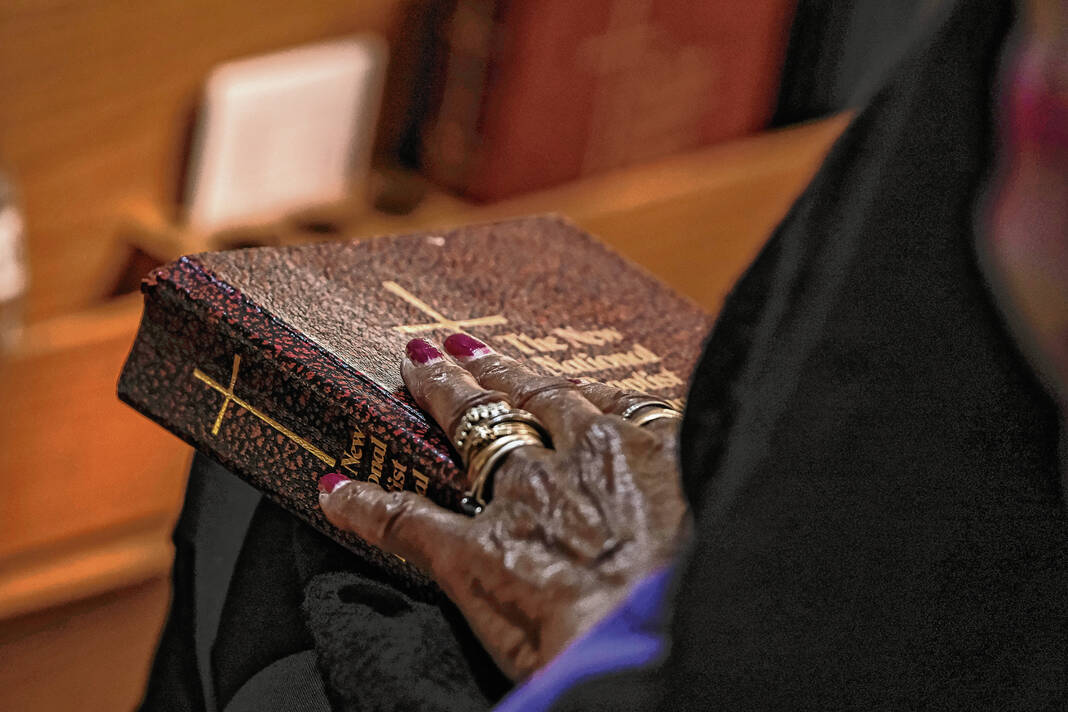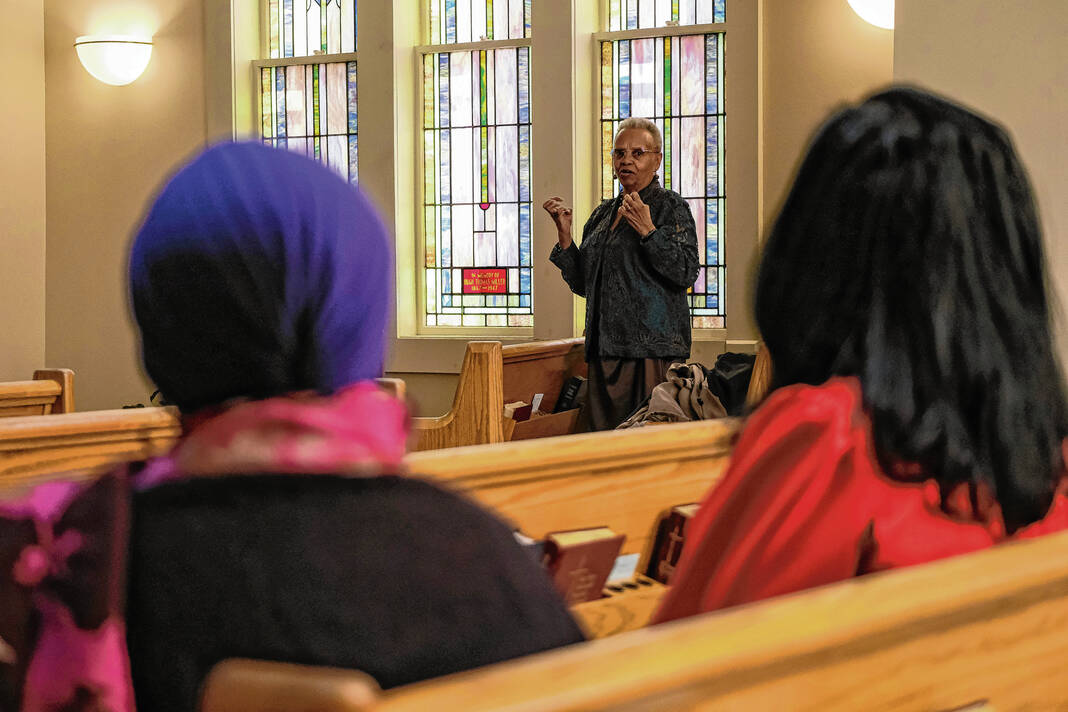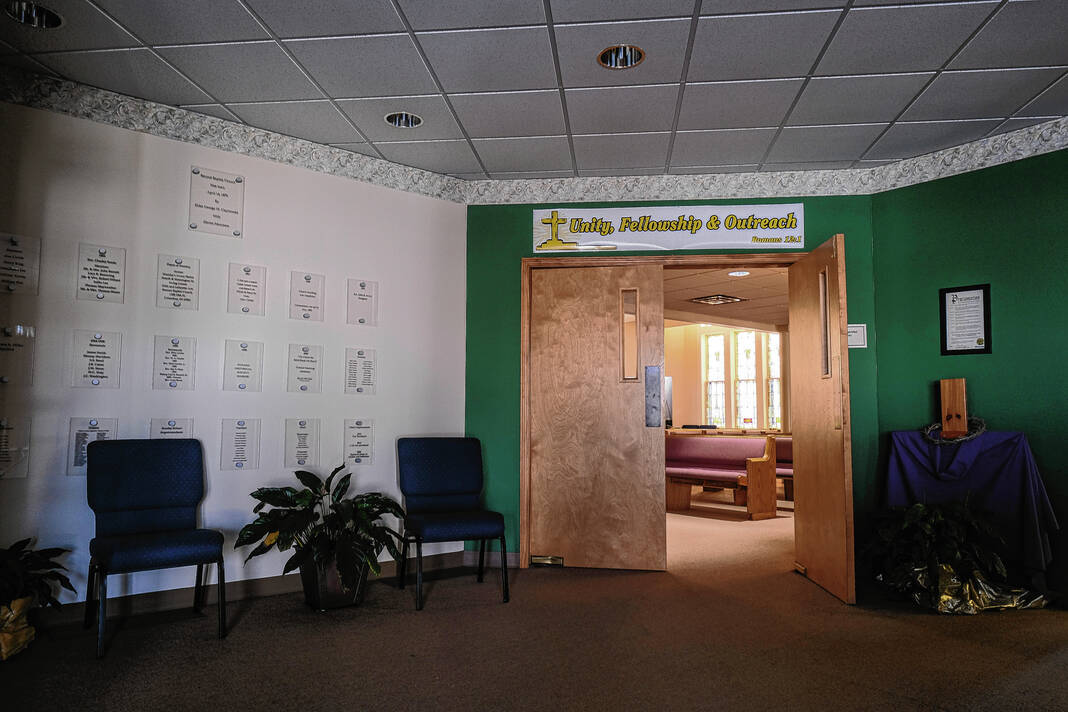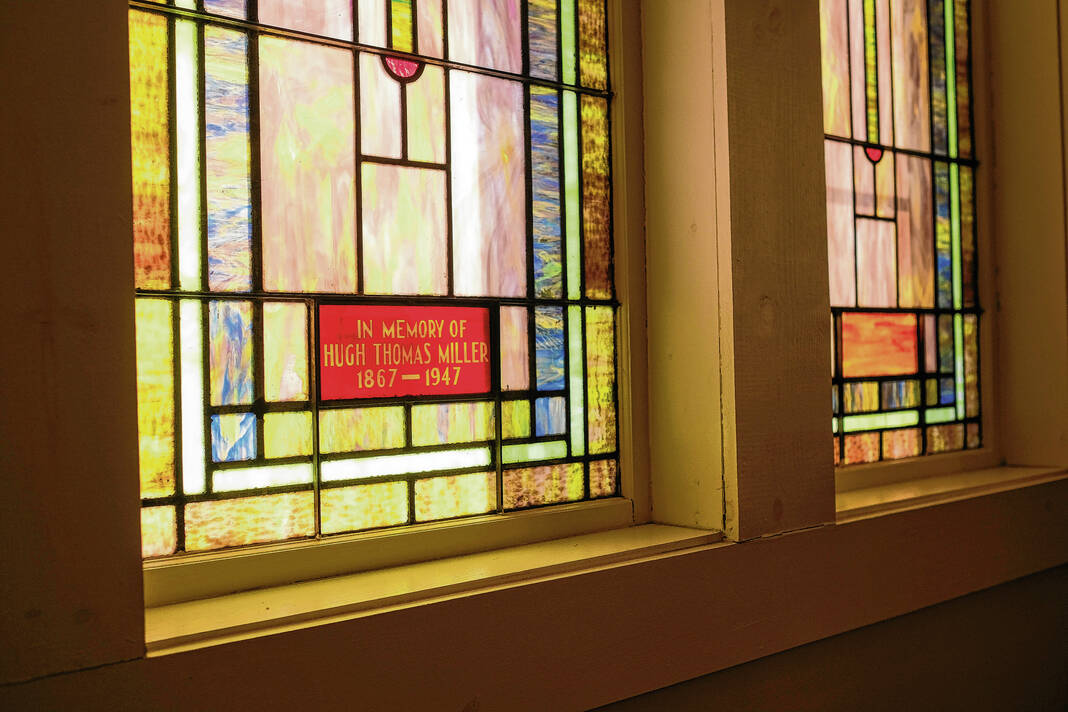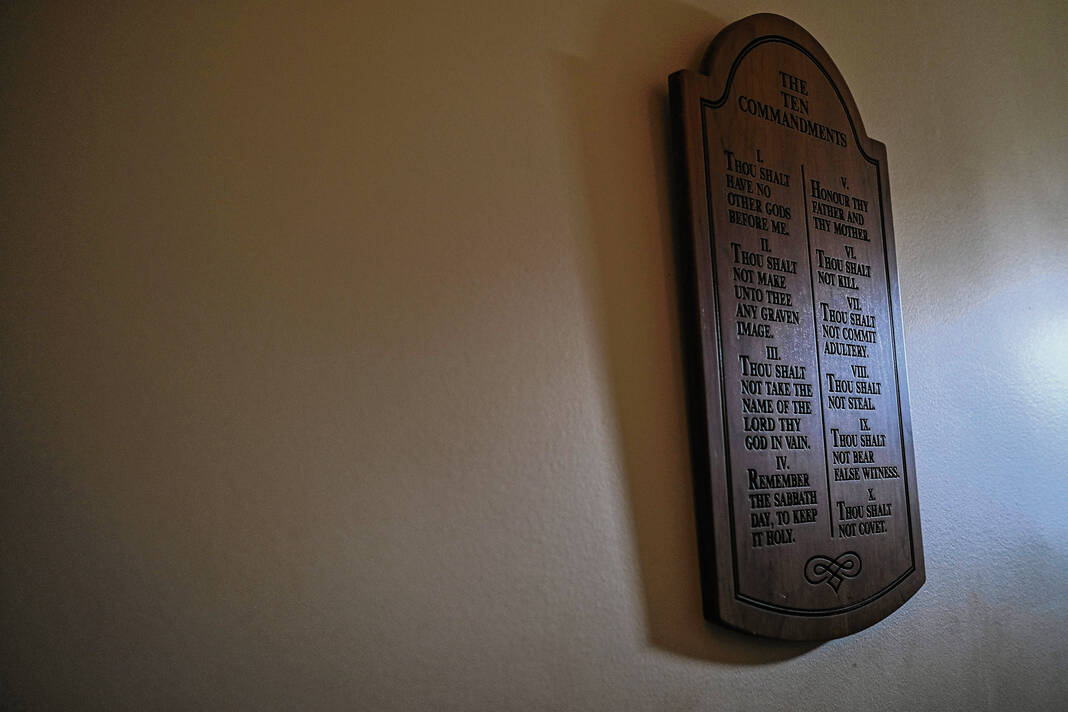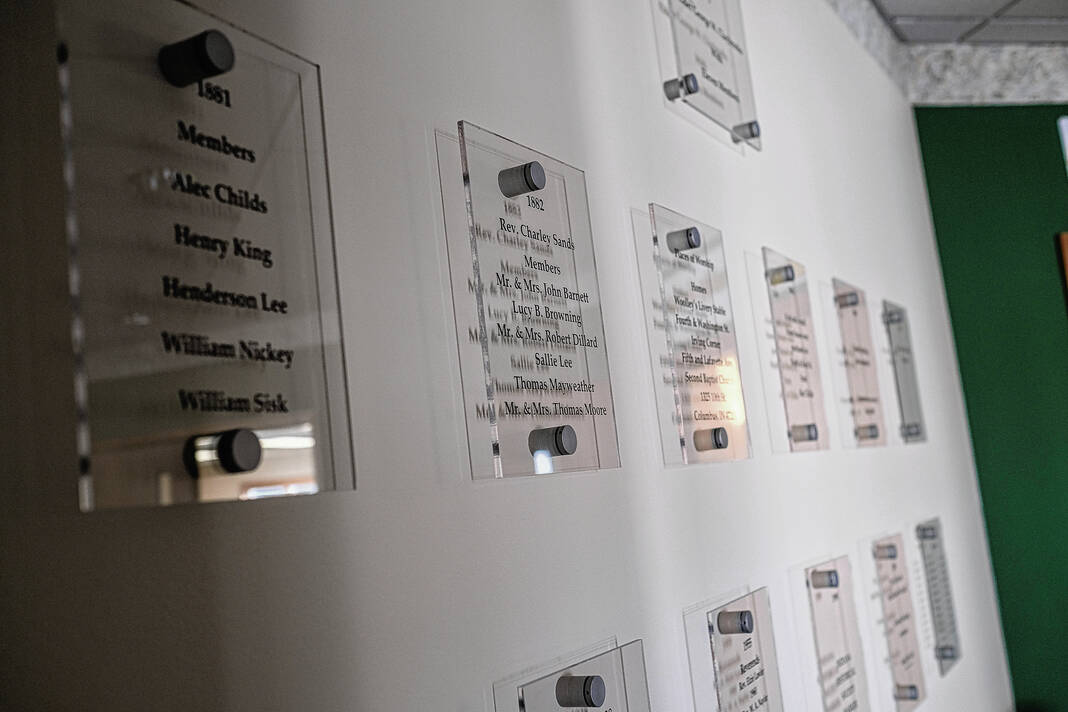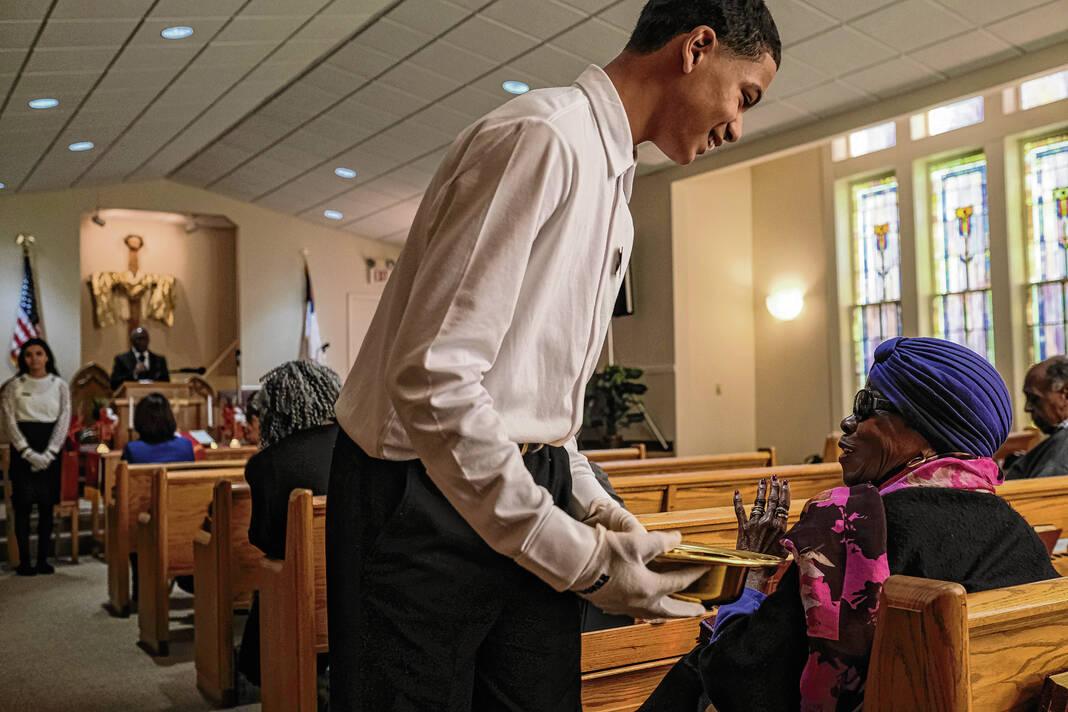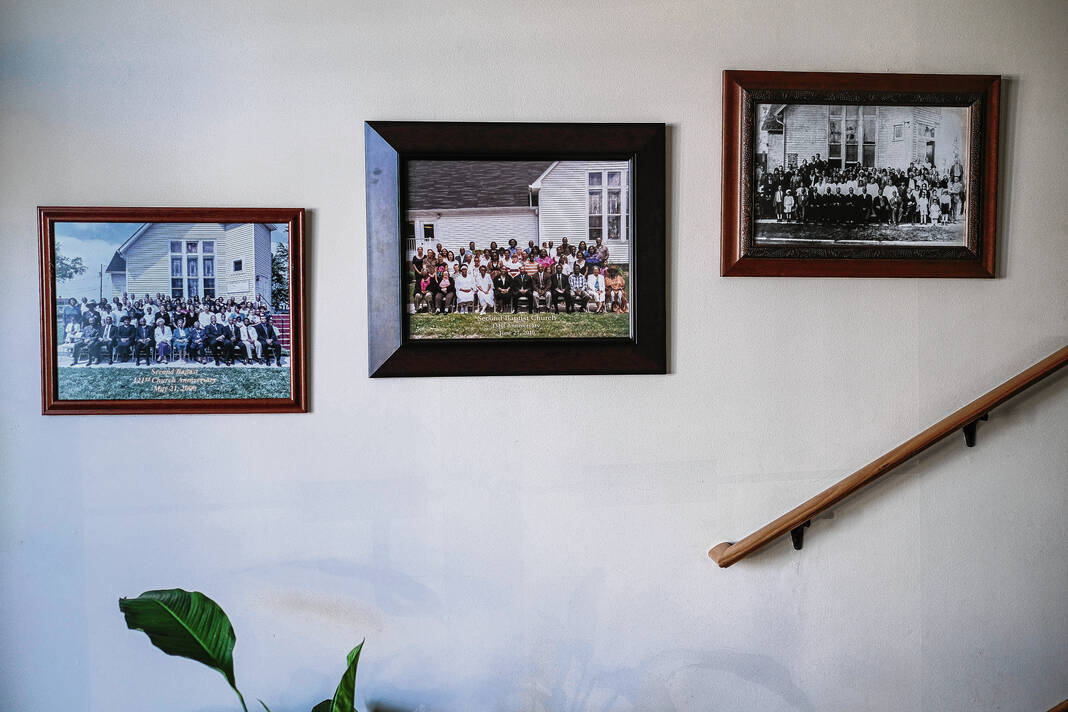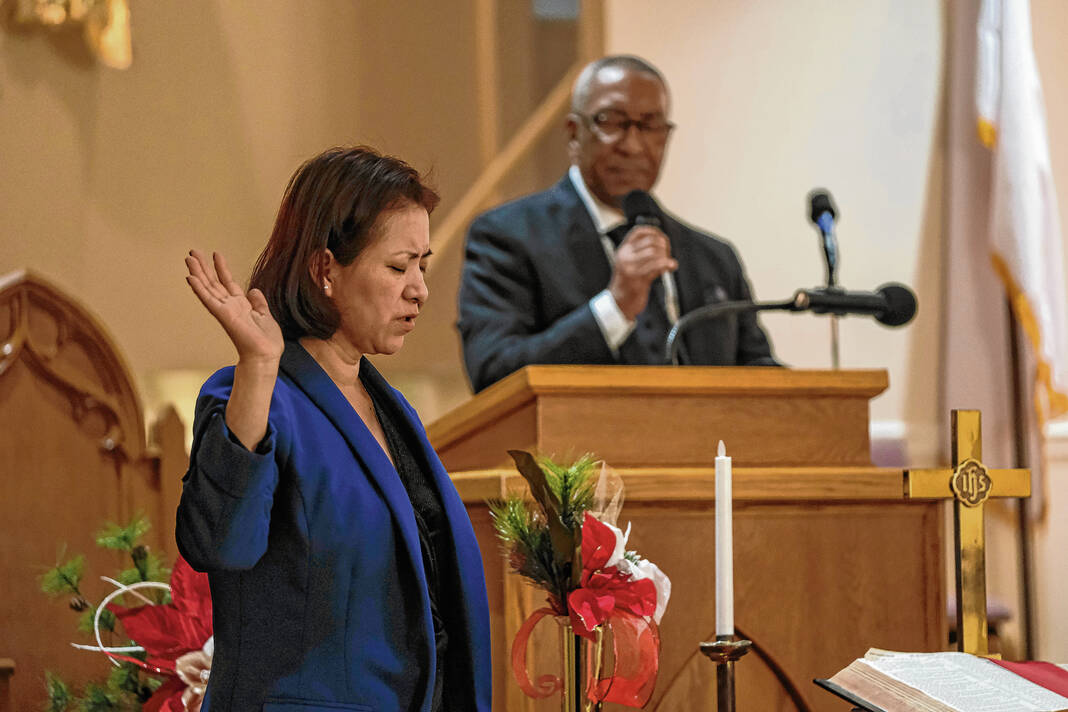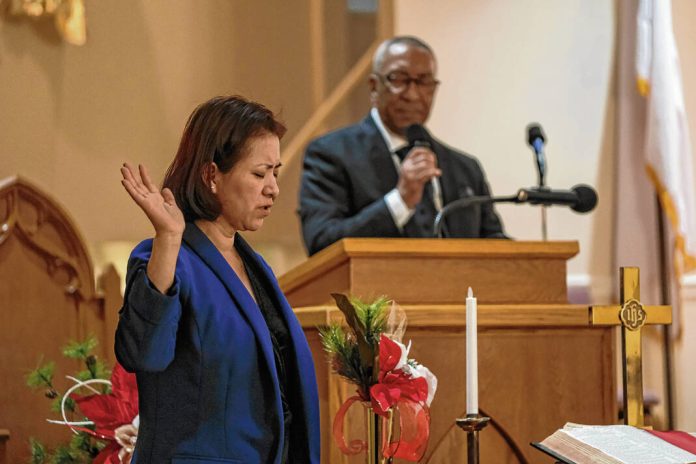
Mike Wolanin | The Republic Honoria Ortiz holds up her hand in prayer during church service at Second Baptist Church in Columbus, Ind., Sunday, Feb. 11, 2024. Second Baptist Church is one of the oldest African American churches in Columbus. The church was established in 1879.
A downtown Columbus church that first welcomed Black residents 145 years ago when many other houses of worship did not still has its arms and doors open wide.
“Ultimately, the Lord is in control,” said Pastor Larry Rowe amid his sermon last Sunday at Second Baptist Church 1325 10th St. “We give him our lives. He is in authority over everything.”
Rowe, the church’s leader for 18 years, was speaking to an assembly of 12 people — all but three at least 55 or older. His message was upbeat but realistic inside the partly stained-glass structure.
He was reminding his flock that they are part of “a historical church” with its roots deep into issues such as the first registered female voters ever in Bartholomew County and more — a fact reflected in the historical marker just outside the front door.
He knows well the hardship that many older churches face. But he also will emphatically say in the next breath, as he did in this message, that “God has given us a hope and a future,” quoting from Jeremiah 29:11.
Amid Black History Month, which he referenced more than once in his remarks, Second Baptist, the oldest of at least six Black-led churches in the city, stands as both a symbol of a painful past and the challenging future. It was born as a refuge from racism, and it continues, as he and its members generally say, as an outreach of God’s love.
Even with limited attendance, its members still host a monthly Love Chapel homemade hot meal site. It completed a successful coat drive for the needy last fall. It hosted a full-house fellowship hall women’s tea last summer.
Leaders will tell you that it is not going anywhere — except where God wants to lead it to help others.
“I want to keep it real,” Rowe said. “I don’t want to create false expectations. But also, I want to focus on the good.”
A board of trustees meeting scheduled in March will give leaders an overview of the past year and a glimpse of what may be coming.
Even with attendance ranging from perhaps 10 to 20 people these days, Second Baptist is making ends meet. Its new HVAC system installed last year was made possible by a public financial campaign with logistics and guidance from the nonprofit Landmark Columbus Foundation because that entity understandably sees the congregation as part of the area’s historical underpinnings.
Other expenses are met from tithes and offerings from members who may have moved away years ago to areas as close as Indianapolis or as far away as Florida. Yet, they still have a heart for the place that shaped their Christian faith.
Cathy Phillips, 70, a member all her life, cannot readily imagine worshipping anywhere else, though she has been to other churches. This is home.
“First of all, I’m used to the music and the way that we do things,” Phillips said. “And I’m here to get the word (of God).”
Rowe, like a few other Black pastors here, never uses the term “Black church,” especially because on select Sundays, there are whites, Latinos and others — at least a few of them.
“We welcome everybody,” Rowe said.
He’s OK with the term Black-led church.
Roxanne Stallworth, chairperson of the church’s board of trustees, mentioned that Second Baptist never operates with a deficit budget.
“Now, I don’t want to pretend as if we’re sitting over here on a ton of money,” Stallworth said. “But we’re not in the poor house, either.”
Somewhere in that land of in-between is where leaders of a number of smaller local churches have confessed they find themselves post-pandemic. Rowe mentioned that when he took over as senior pastor of Second Baptist in 2006, attendance averaged about 100 people weekly. But gradually, members either moved away or older ones have passed away.
And the post-pandemic recovery has been slow.
Yet, the atmosphere remains distinct. Ushers still wear elegant white gloves — a symbol of God’s spiritual purity in them. The organist still plays softly all during the sermon messages, giving Rowe’s words a river of music to ride upon.
Praise reports and prayer requests still flow liberally during an open-mic segment that bears an intimate, vulnerable, community feel.
Both Rowe and Stallworth refuse to actively entertain any notion of Second Baptist’s demise years from now. Besides, they are preparing to formally launch Phase II of their physical refurbishing that includes a new roof, parking lot resurfacing and repairing the building foundation.
That represents a church body looking to restoration in more ways than one — and a pastor with his eye on more than mere attendance. That was reflected in his spontaneous prayer that opened Sunday’s service.
“We’re here in this place to be able to praise you and to honor you, almighty God,” Rowe said. “And, really, it doesn’t ultimately matter if we have just one person here, or if we have 1,000.”
About Second Baptist
Where: 1325 10th St. near downtown Columbus
Begun: April 14, 1879
Worship service: 11 a.m. to 12:45 p.m. Sundays
Facebook page: Second Baptist Church of Columbus

